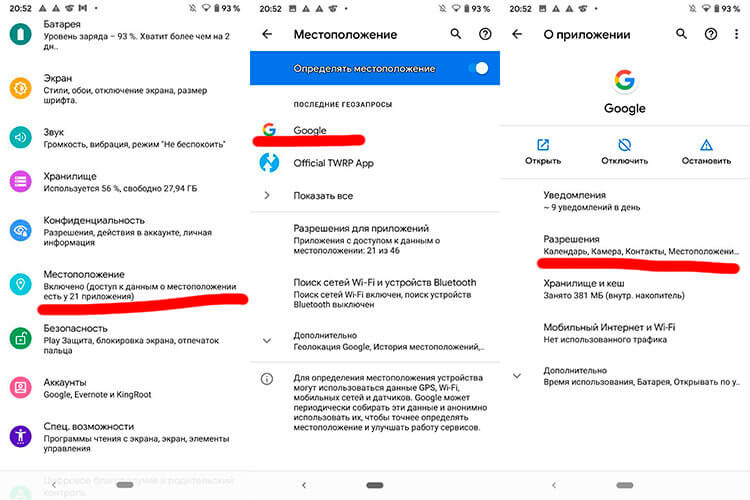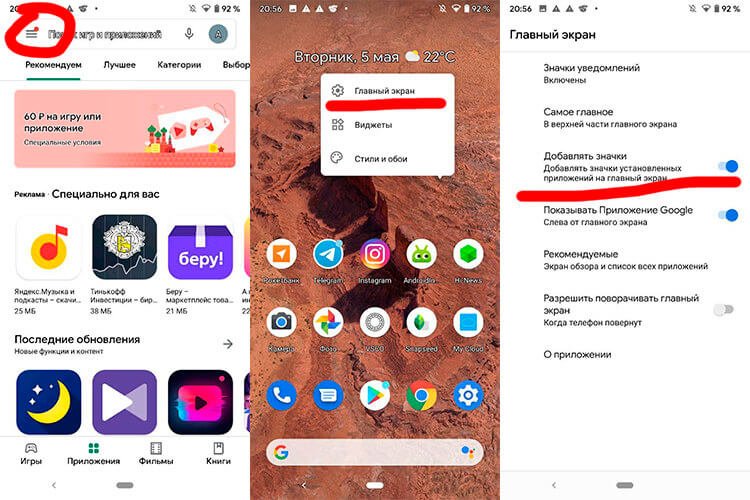Let's be honest: among the endless and interesting features Android there are some settings and options that are not so useful and that you want to disable even before you pick up your phone. True, either because of laziness, or because of forgetfulness, we do not do this, we continue to use it as it is and in the end we even get used to it. But when you come across them, these functions still enrage and live with them is very unpleasant. I have at least three of these functions, which I do not mind to devote a separate article on our website. I am sure you will have something to add. After all, criticism is not a sign of dislike, but a desire to do better. In this case, do it yourself Android.

If something in the phone pisses me off, it must be turned off.
Disable GPS for Apps
Many users Android often face the problem of autonomy. For all its advantages, the system is designed in such a way that it is very voracious. As a result, this leads to the fact that even smartphones with high battery capacity do not last as long as we would like.
I will immediately warn you against using various optimizers, which can often only make things worse. Instead, you need to optimize the application yourself a little. One of the reasons a smartphone runs out of battery faster is because apps can access its hardware.
By default, when an app needs access to your location, it uses GPS, which increases power consumption. This is very annoying, because I cannot do otherwise and the application will gain access. However, you can change the setting for each individual application installed on your smartphone. Thus, you will definitely benefit from increased battery life.
To configure access to a location, you need to find the “Location” section in the settings. Sometimes it is moved to the root of the settings, and sometimes it is located in the “Security” section. By opening this setting, you will see all the apps that access your location. Open it, change the setting and you're done.

This is how you can configure app permissions.
Android 10 has an additional feature. You can decide whether to grant you access to a specific application at any time, only during use, or deny access entirely.
To do this, go to the settings, find the “Applications” section, select the one you want, then go to the permissions and configure access to what you want.
How to remove an app from the home screen
I really love order and minimalism. Everything on my desktop should be clear and to the point. Everything else annoys me greatly. This also applies to the settings Android, due to which, after installing a new application, its icon appears on the main screen.
This leads to the fact that I have to delete or move it. When this happens in launchers, in which the application menu is missing or hidden very deeply, I can still understand it, but in other cases I would like to be asked whether to place an icon on the home screen. I could choose what I need and what I use every day and that's it. Same as desktop Windows.

You can turn off the placement of shortcuts on the home screen as follows.
Fortunately, this feature can be turned off by default. To do this, go to Google Play, go to the settings menu by clicking three lines in the upper left corner. In the drop-down menu, you need to find something like “Add icons to the main screen”. If this is not the case, you need to press and hold on any free space on the main screen. In the drop-down Menu, select the settings and there uncheck this item.
Turn off vibration when you touch your phone screen
I never understood why you need a tactile response to every touch of the screen Android – a smartphone. It would be fine if the response was normal, so that the return could really be felt. Now, in fact, this is some kind of incomprehensible “bzzzz”, which causes nothing but irritation. Plus, this also drains the battery and power users disable this feature.
In order to turn it off, you need to go to the smartphone settings, select the “Sound and vibration” section and turn off the tactile response inside. Some menu items will have a different name, but this is not so critical and not difficult to find.

The Taptic Engine in iPhone and Apple Watch can give tactile feedback, but a simple vibration motor cannot.
Now that you know how to turn off these three boring features Android, you can enjoy all the benefits of your device by using it wisely and reducing the strain on your battery.
I am more than sure that you also have something to tell about the endless functions and settings Android. Share your observations in our Telegram chat or in the comments.
